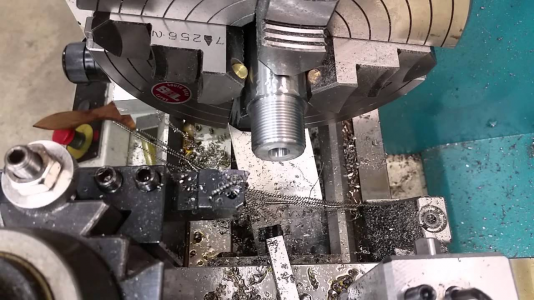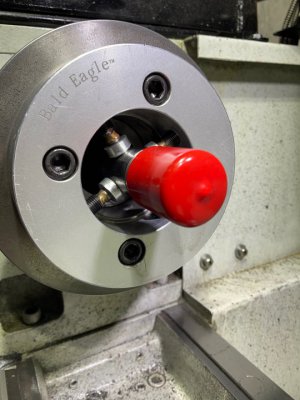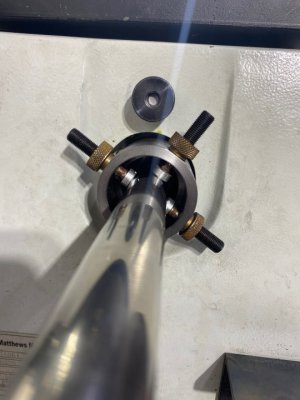- Joined
- Oct 4, 2020
- Messages
- 484
One thing worth mentioning and you might not have this problem. Biggest source of frustration dialing in barrel was brass tipped screws. Probably adjusting them too tight but nothing like getting close and your tip crushes or distorts and throws everything off. I changed over to using aluminum pads with a ball bearing tip on adjustment screws on inboard and outboard spiders. Made a world of difference in speed of dialing in. Also make sure outboard spider and inboard side, whether spider or chuck, that the jaws or adjuster screws are aligned the same.
Making those aluminum pads is pretty easy with mill and annular cutter. Used some 1/8" aluminum and made a 5/16" depression with a ball nosed mill, then drilled out with maybe 3/4" annular cutter and the ejected piece is your pad. I have 5/16' ball bearings tig welded onto end of 3/8"-24 adjustment bolts.
I am using brass tipped screws on the outboard spider. As I thought through it I really wanted to come up with a round "pad" or small v-block with the V facing the barrel so there's some more contact.
On the inboard side I'm using a big copper wire. I annealed the wire to wrap them in a circle in several different sizes. Gives a nice pivot point.
I think the way Area419 does it is quite clever:

I'm sure it's something they did themselves but I really like the idea.


